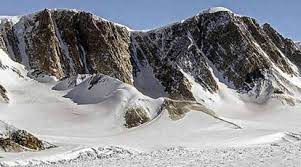Global Glacier Change In The 21st Century : Report

A report titled “Global glacier change in the 21st century: Every increase in temperature matters”, which states half the Earth’s glaciers may disappear by 2100.
- The researchers used two decades of satellite data to map the planet’s glaciers with greater precision than ever before.
- The United Nation’s (UN) Intergovernmental Panel on Climate Change’s sixth assessment report released in 2022 also warned that we are running out of time to attain the 1.5°C target.
Findings:
- Glaciers are receding at unprecedented rates due to climate change and rising temperatures.
- The amount of ice lost by glaciers between 1994 and 2017 was around 30 trillion tones and they are now melting at a pace of 1.2 trillion tonnes each year.
- The glaciers in the Alps, Iceland and Alaska are some of those that are melting at the quickest rates.
- Half the Earth’s glaciers are destined to vanish by 2100, even if we adhere to the Paris Climate Agreement goal of limiting global temperature rise to 1.5 degrees Celsius above pre-industrial levels.
- A minimum of 50 % of the loss will occur within the next 30 years. 68% of glaciers will vanish if global warming continues at the current rate of 2.7°C.
- If this happens, by the end of the following century, there would be practically no glaciers left in central Europe, western Canada and the United States.
- Some of these glaciers can be saved from extinction by reducing global warming, the researchers noted.
- Glaciers, which hold 70 % of the Earth’s freshwater, currently encompass around 10 % of the planet’s land area.
- Melting glaciers raise sea levels dramatically, jeopardizing up to two billion people’s access to water and increasing the risk of natural disasters and extreme weather events like floods.
- Global sea level rose by 21 % between 2000 and 2019.
- This was solely due to meltwater from melting glaciers and ice sheets.




